- Fertilising Strawberries: An Overview
- Root Application
- Foliar Application
- Choosing the Right Fertiliser
- Conclusion
- Importance of Fertilising Before Flowering
- 1. Promotes Root Development
- 2. Enhances Leaf Growth
- 3. Improves Flower Production
- 4. Increases Fruit Quality and Yield
- Enhancing Root Development in Strawberries
- Importance of Root Development
- Methods to Enhance Root Development
- Conclusion
- Promoting Healthy Leaf Growth in Strawberries
- 1. Proper Nutrition
- 2. Water Management
- 3. Sunlight Exposure
- 4. Pruning
- 5. Disease and Pest Control
- Methods of Fertilising Before Flowering
- Applying Fertilisers to the Soil
- Foliar (Leaf) Application of Fertilisers
- Combination of Soil and Foliar Application
- Applying Organic Fertilisers
- Root Application Techniques for Strawberry Plants
- Leaf Application Techniques for Strawberry Plants
- Choosing the Right Fertiliser
- Nutrient Content
- Time-release vs. Water-soluble
- Organic vs. Synthetic
- Important Nutrients for Strawberries Before Flowering
- 1. Nitrogen (N)
- 2. Phosphorus (P)
- 3. Potassium (K)
- 4. Calcium (Ca)
- 5. Magnesium (Mg)
- 6. Trace Elements
- Question-answer:
- What are the benefits of fertilising strawberries before flowering?
- Can I apply fertilisers directly to the roots of strawberry plants?
- What kind of fertilisers should I use for root application?
- Can I apply fertilisers directly to the leaves of strawberry plants?
- What are the advantages of foliar application of fertilisers?
- When is the best time to fertilise strawberries before flowering?
- Video: HOW to PLANT and GROW STRAWBERRIES, plus TIPS for growing strawberries in HOT CLIMATES
When it comes to growing strawberries, fertilisation is a key factor in ensuring a successful harvest. One crucial step in the fertilisation process is applying fertilisers before the plants start blooming. By providing the necessary nutrients at this stage, you can help the plants develop healthy roots and promote vigorous vegetative growth, which ultimately leads to larger and tastier strawberries.
There are two main methods of fertilising strawberries before flowering: root applications and leaf applications. Root applications involve adding fertilisers directly to the soil around the plants’ root zone, while leaf applications involve spraying a liquid fertiliser onto the leaves. Both methods have their advantages and can be used in combination to maximize the plants’ nutrient uptake and overall growth.
Root applications are typically done by incorporating slow-release fertilisers into the soil or applying liquid fertilisers at the base of the plants. These fertilisers provide a steady supply of nutrients over an extended period, ensuring that the plants have access to the necessary elements throughout their growth cycle. Additionally, root applications allow the plants to take up the nutrients directly through their roots, which is the natural way for them to absorb nutrients from the soil.
On the other hand, leaf applications involve spraying a liquid fertiliser onto the leaves of the strawberry plants. This method provides immediate nutrient absorption through the leaves’ stomata, bypassing the root system. Leaf applications are especially beneficial in nutrient-deficient soils or when a quick nutrient boost is needed. However, it’s essential to note that leaf applications should be done carefully to avoid over-application, as this can lead to leaf burn or other adverse effects.
In conclusion, fertilising strawberries before flowering through root and leaf applications is crucial for promoting plant growth and ensuring a bountiful harvest. Both methods have their advantages and can be used together to optimize nutrient uptake. Whether you choose to apply fertilisers directly to the soil or spray them onto the leaves, providing the necessary nutrients at this stage will help your strawberry plants thrive and produce delicious fruits.
Fertilising Strawberries: An Overview
When it comes to growing strawberries, fertilisation plays a crucial role in ensuring healthy plants and a bountiful harvest. Fertilisers provide essential nutrients that strawberries need for optimal growth, flower production, and fruit development. There are two main methods of fertilisation: root application and foliar application.
Root Application
Root application involves applying fertilisers directly to the soil around the strawberry plants. This method ensures that the nutrients are available to the plants’ roots for absorption. A balanced fertiliser with macronutrients such as nitrogen, phosphorus, and potassium is typically used for root application. Additionally, micronutrients like iron, magnesium, and manganese may be included to address any nutrient deficiencies.
When applying fertilisers to the soil, it is important to follow the manufacturer’s instructions regarding the proper dosage and timing. Generally, fertilisers should be applied before planting the strawberry plants and then regularly throughout the growing season. This ensures a continuous supply of nutrients for the plants.
Foliar Application
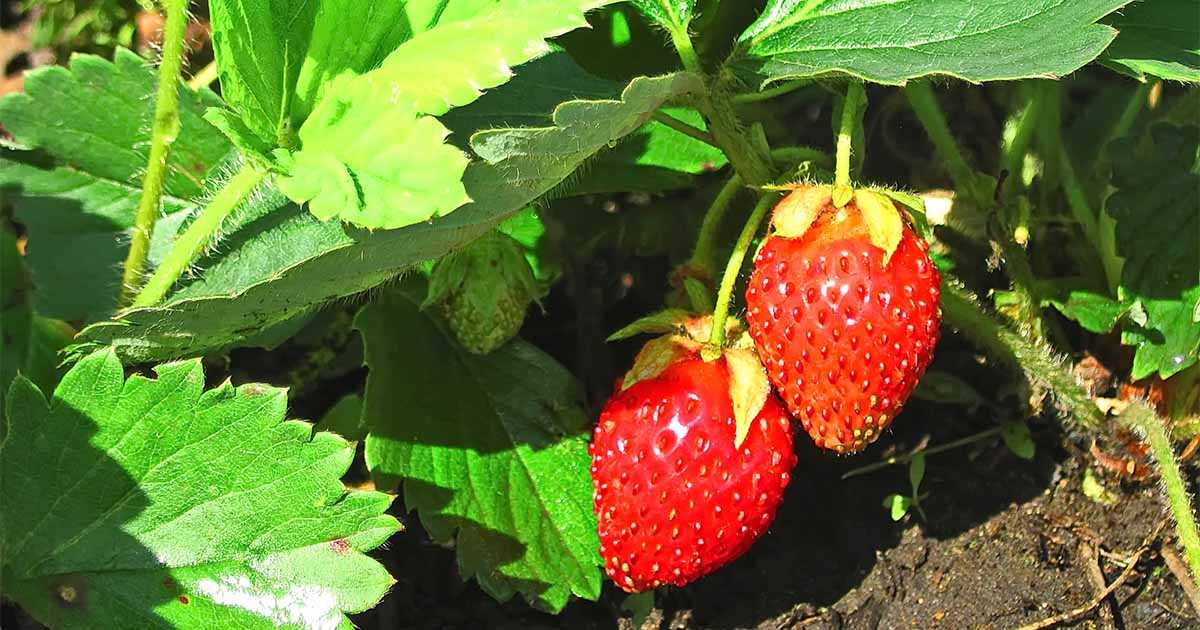
Foliar application involves spraying a liquid fertiliser onto the leaves of the strawberry plants. This method allows for quick absorption of nutrients through the leaves, bypassing the root system. Foliar fertilisers are typically used in conjunction with root application to provide an additional boost of nutrients during critical growth stages, such as flowering and fruiting.
When using foliar fertilisers, it is important to ensure uniform coverage of the leaves to maximize nutrient absorption. This can be achieved by using a fine mist sprayer and applying the fertiliser in the early morning or late afternoon when the temperature is cooler.
Choosing the Right Fertiliser
When selecting a fertiliser for strawberries, it is important to choose one specifically formulated for berry crops. These fertilisers are often high in potassium, which promotes flower production and fruit development. It is also beneficial to choose a slow-release fertiliser that provides a steady supply of nutrients over an extended period.
Conclusion
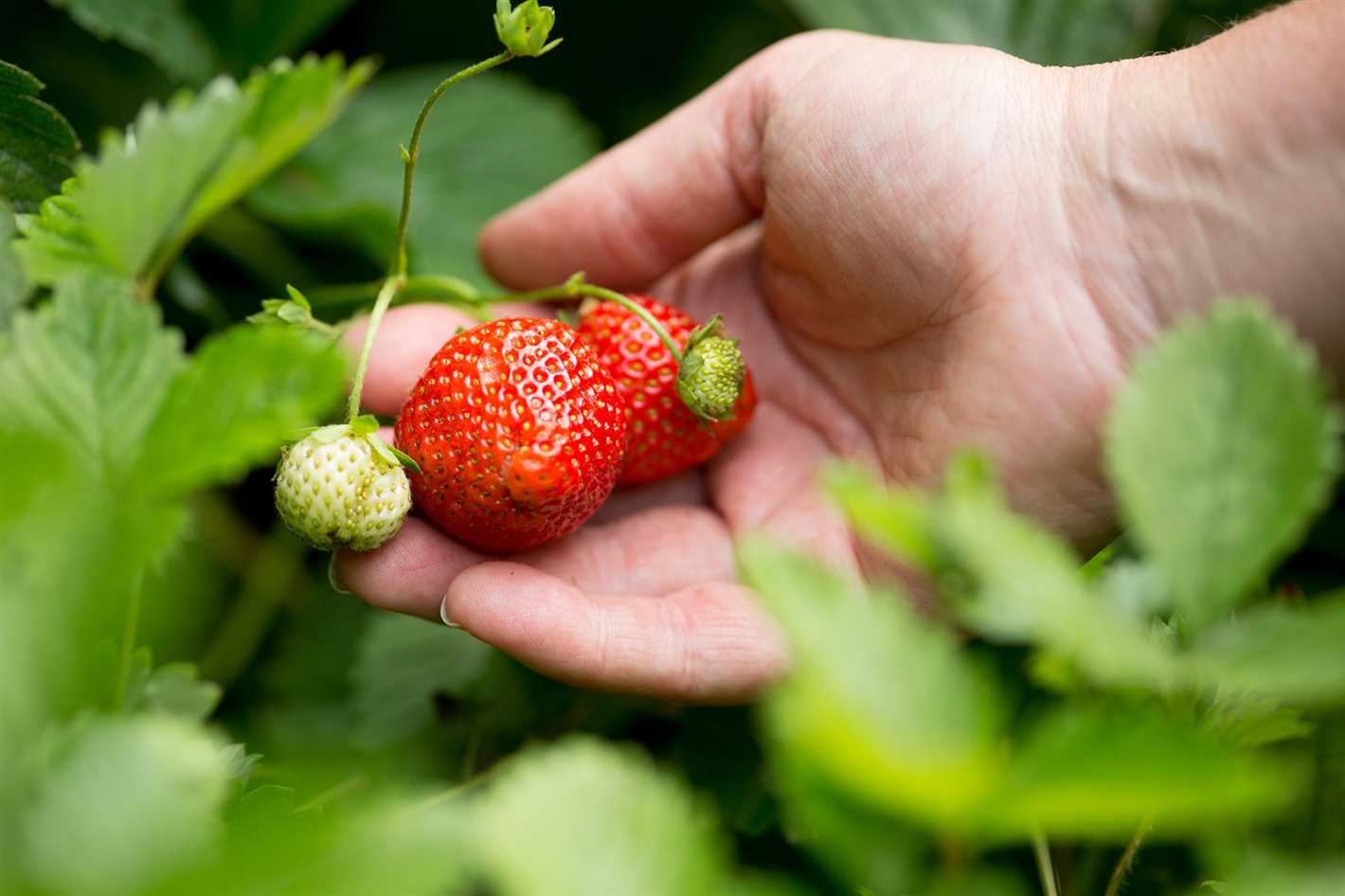
Fertilising strawberries is essential for their growth and productivity. Root and foliar applications provide the necessary nutrients for healthy plants, abundant flowers, and delicious fruits. By choosing the right fertiliser and following the recommended application methods, gardeners can enjoy a successful strawberry harvest year after year.
Importance of Fertilising Before Flowering
Fertilising strawberries before flowering is crucial for ensuring healthy growth and optimal fruit production. The early stages of growth are particularly important for establishing a strong root system and promoting vigorous growth of leaves and stems. By providing the necessary nutrients during this critical period, strawberry plants can develop a solid foundation that will support the production of high-quality fruit.
1. Promotes Root Development
Applying fertilisers before flowering helps stimulate root development in strawberry plants. Roots play a vital role in the uptake of water and nutrients, as well as providing stability to the plant. By providing an adequate supply of nutrients such as nitrogen, phosphorus, and potassium, the roots can develop strong and healthy, allowing the plant to absorb essential resources for growth.
2. Enhances Leaf Growth
Leaf growth is essential for capturing sunlight, which is vital for photosynthesis, the process that converts sunlight into energy for the plant. Fertilising before flowering ensures that strawberry plants have access to the nutrients they need to produce healthy and abundant leaves. This, in turn, allows the plant to maximize its photosynthetic capacity and provide the energy necessary for fruit development.
3. Improves Flower Production
Proper nutrition before flowering is crucial for promoting the production of flowers in strawberry plants. Flowers are necessary for pollination and subsequent fruit set. By providing balanced fertilisation, including micronutrients like boron and calcium, strawberry plants can produce the optimal number of flowers and facilitate successful fruit formation.
4. Increases Fruit Quality and Yield
Fertilising before flowering directly impacts the quality and yield of strawberries. A well-nourished plant tends to produce larger, juicier, and more flavorful fruits. Additionally, proper nutrition promotes uniform fruit size and reduces the occurrence of deformities or blemishes. By supplying the necessary nutrients at the right time, growers can ensure that their strawberry plants bear a healthy and abundant crop.
In conclusion, fertilising strawberries before flowering is crucial for the overall success of strawberry production. By promoting root development, enhancing leaf growth, improving flower production, and increasing fruit quality and yield, growers can maximize the potential of their strawberry plants and achieve optimal results.
Enhancing Root Development in Strawberries
Root development is crucial for the overall growth and productivity of strawberry plants. Strong and healthy roots allow plants to absorb water and nutrients more efficiently, leading to improved plant health and yield.
Importance of Root Development
A well-developed root system is essential for strawberries, as it helps the plant anchor itself in the ground and provide structural support. Additionally, a healthy root system allows for better nutrient uptake, water absorption, and communication with soil microorganisms.
Improved root development also plays a role in the overall resilience of strawberry plants. Stronger roots can better withstand environmental stresses like drought or high temperatures, ensuring the plant’s survival and productivity.
Methods to Enhance Root Development
There are several strategies that can be employed to enhance root development in strawberries:
Proper Soil Preparation: Before planting, it is vital to prepare the soil by removing any weeds and incorporating organic matter. This improves soil structure, drainage, and nutrient availability, creating favorable conditions for root growth.
Appropriate Irrigation: Providing adequate, consistent moisture is crucial for root development. Irrigating strawberries regularly, especially during dry periods, ensures that the roots have access to water for proper growth.
Using Root Growth Promoting Substances: Certain plant growth regulators, such as auxins, can be applied to strawberries to stimulate root growth. These substances can be applied as a root dip during transplanting or as a foliar spray throughout the growing season.
Managing Nitrogen Levels: Nitrogen is an essential nutrient for plant growth, including root development. However, excessive nitrogen can lead to excessive vegetative growth at the expense of root development. Careful monitoring and application of nitrogen fertilizers can help strike a balance for optimal root development.
Conclusion
Enhancing root development in strawberries is crucial for their overall success and productivity. By employing proper soil preparation, irrigation practices, and the use of growth-promoting substances, growers can ensure that their plants have strong and healthy root systems. This will contribute to improved nutrient uptake, water absorption, and overall plant health, leading to higher yields and better quality strawberries.
Promoting Healthy Leaf Growth in Strawberries
Leaf growth is an essential part of the development of healthy strawberries. Strong and productive leaves contribute to the overall health and productivity of the plants. There are several key factors to consider when promoting healthy leaf growth in strawberries.
1. Proper Nutrition
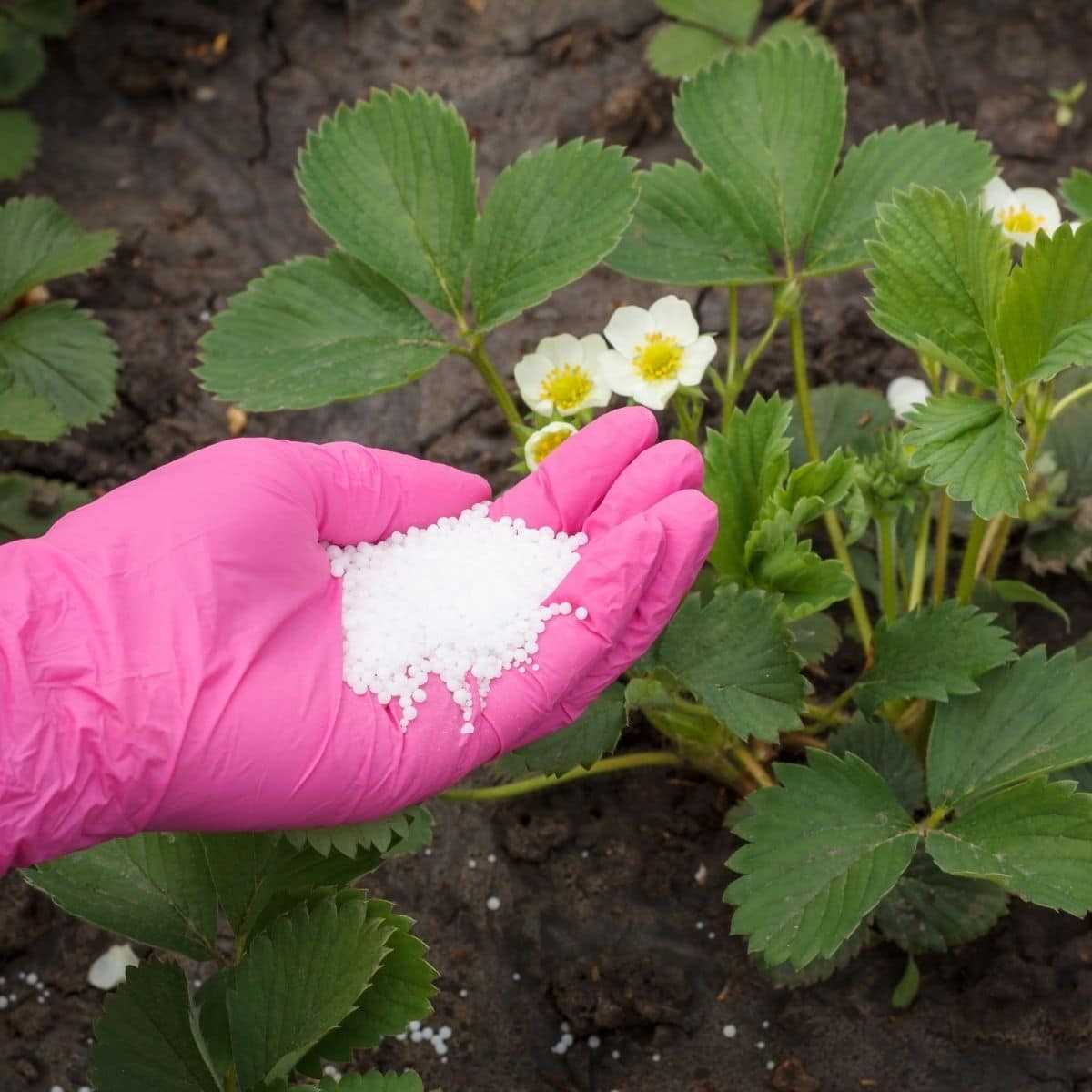
Providing strawberries with the right nutrients is crucial for optimal leaf growth. A balanced fertilizer that contains nitrogen, phosphorus, and potassium is essential for promoting healthy leaf development. Nitrogen helps in the formation of chlorophyll, which is responsible for the green color of leaves. Phosphorus aids in energy transfer and promotes root growth, while potassium strengthens cell walls and improves disease resistance.
2. Water Management
Strawberries require a consistent supply of water to support leaf growth. Too little water can stunt leaf development, while excessive moisture can lead to root rot and other diseases. It is important to maintain proper soil moisture levels by watering regularly and avoiding waterlogging.
3. Sunlight Exposure
Strawberries thrive in full sun conditions. Adequate sunlight exposure is necessary for proper photosynthesis, which fuels leaf growth. Ensure that strawberry plants are located in an area that receives at least 6-8 hours of direct sunlight per day.
4. Pruning
Regular pruning helps promote healthy leaf growth in strawberries. Removing yellowing or damaged leaves allows the plant to direct its energy towards producing new, healthy leaves. Pruning also improves air circulation, reducing the risk of fungal diseases.
5. Disease and Pest Control
Effective disease and pest control measures are essential for maintaining healthy leaves in strawberries. Regularly inspect plants for signs of diseases or pests, such as fungal infections or aphid infestations. Treat any issues promptly to minimize damage to the leaves.
By following these practices, you can promote healthy leaf growth in strawberries, ensuring strong and productive plants that yield delicious fruits.
Methods of Fertilising Before Flowering
There are several methods of fertilising strawberries before flowering to ensure optimal growth and fruit production. These methods include:
- Applying fertilisers to the soil
- Foliar (leaf) application of fertilisers
- Combination of soil and foliar application
- Applying organic fertilisers
Applying Fertilisers to the Soil
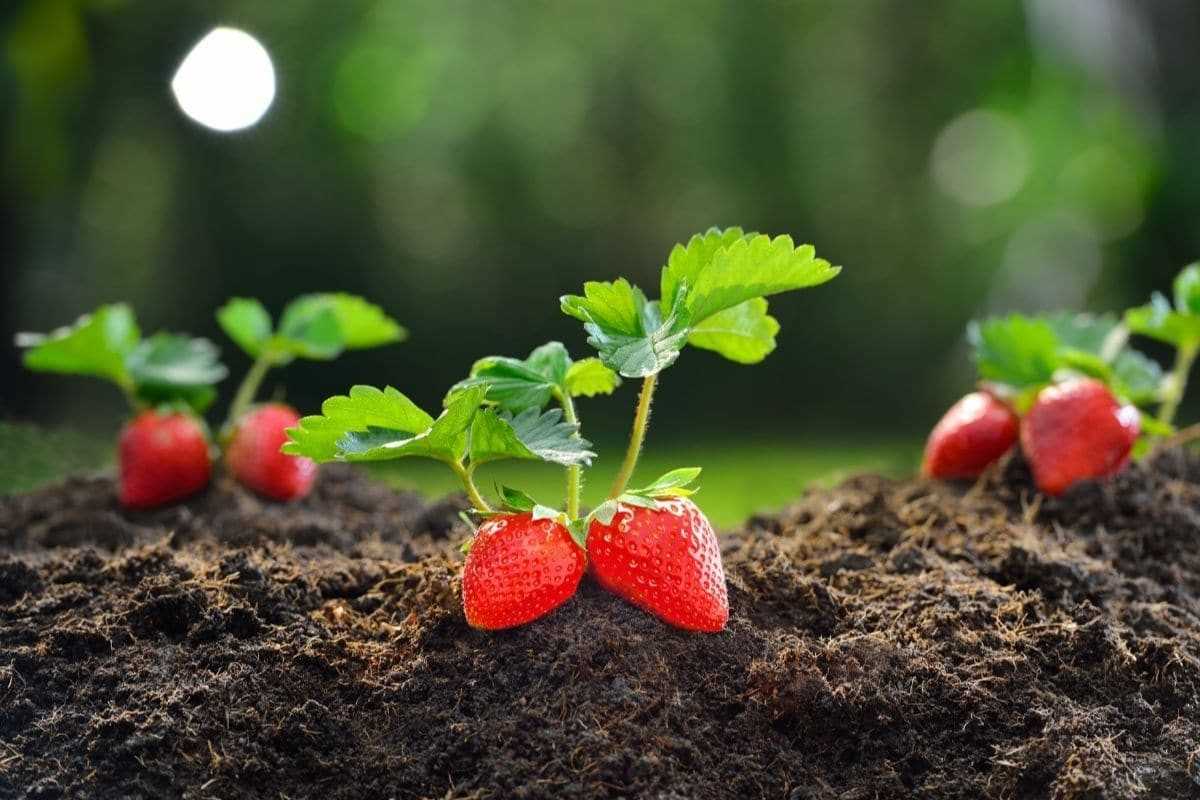
One common method of fertilising strawberries before flowering is by applying fertilisers directly to the soil. This can be done by broadcasting granular fertilisers evenly over the planting area or by banding them in rows between the plants. The fertilisers should be applied according to the recommended rates based on soil test results.
Foliar (Leaf) Application of Fertilisers
Foliar application of fertilisers involves spraying a liquid fertiliser solution directly onto the leaves of the strawberry plants. This method allows for quick nutrient absorption and can be especially beneficial in situations where the soil is lacking certain nutrients. It is important to follow the recommended application rates and timing for foliar fertilisation to avoid leaf burn or nutrient imbalances.
Combination of Soil and Foliar Application
Another approach is to combine soil application with foliar application. This method can provide a balanced nutrient supply, as the plants can uptake nutrients through both their roots and leaves. By applying fertilisers to the soil and foliarly, the strawberry plants can better meet their nutrient requirements and overcome any deficiencies.
Applying Organic Fertilisers
Organic fertilisers, such as compost, well-rotted manure, or organic liquid fertilisers, can also be used to fertilise strawberries before flowering. These organic options contribute to the overall health of the soil and promote long-term sustainability. Apply organic fertilisers according to product instructions or soil test recommendations to ensure proper nutrient availability for the plants.
In conclusion, there are multiple methods of fertilising strawberries before flowering, including soil application, foliar application, a combination of both, and the use of organic fertilisers. Care should be taken to apply the fertilisers according to recommended rates and timing to avoid nutrient imbalances or plant damage.
Root Application Techniques for Strawberry Plants
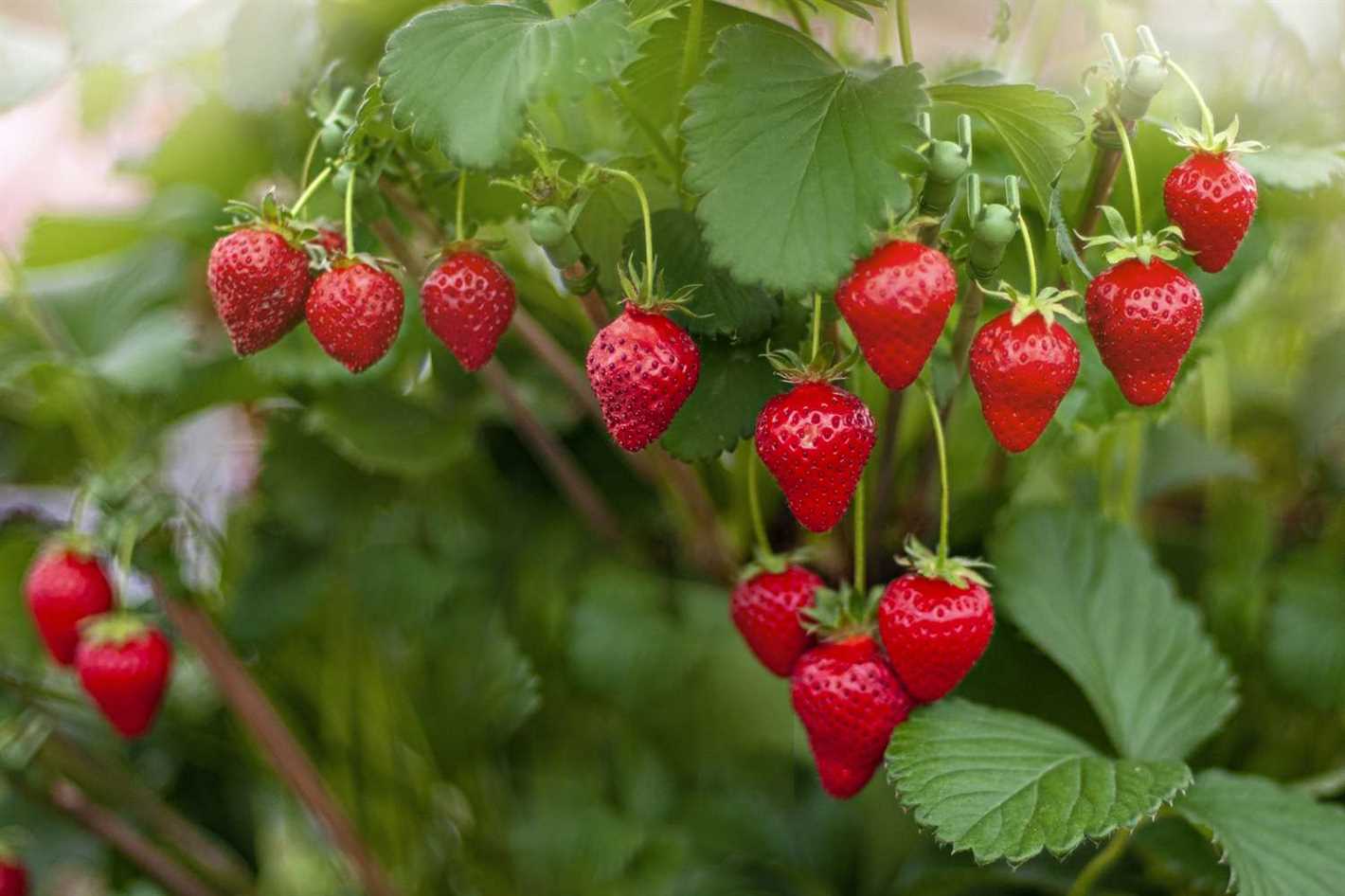
Root application of fertilizers is an important technique to ensure the proper nutrition of strawberry plants. By applying fertilizers directly to the plant’s root system, it allows for efficient absorption and utilization of nutrients. There are several root application techniques that can be used for strawberry plants:
- Drenching: Drenching involves soaking the soil around the base of the strawberry plants with a diluted fertilizer solution. This technique allows for the nutrients to penetrate the soil and reach the roots, providing the plants with essential elements.
- Injection: Injection is a method where the fertilizer solution is directly injected into the root zone of the strawberry plants. This technique ensures precise placement of the nutrients, maximizing their uptake by the roots.
- Band Placement: Band placement involves creating a narrow band or trench alongside the row of strawberry plants and applying the fertilizer directly into the band. This technique allows for concentrated application of nutrients in the root zone, promoting healthy growth.
When applying fertilizers to the roots of strawberry plants, it is important to consider the timing and frequency. Typically, root applications should be done before flowering to provide the plants with the necessary nutrients for optimal growth and yield. Regular monitoring of the plants’ nutrient levels and response to the fertilizers can help adjust the timing and frequency of root applications to meet their specific needs.
In conclusion, root application techniques play a crucial role in fertilizing strawberry plants. By using drenching, injection, or band placement methods, growers can ensure efficient nutrient uptake and promote healthy growth in their strawberry crops.
Leaf Application Techniques for Strawberry Plants
Leaf application techniques can be a useful way to provide nutrients to strawberry plants. This method involves applying fertilizers or other nutrients directly to the leaves of the plants, allowing for efficient absorption through the foliage. Here are some techniques for leaf application of fertilizers for strawberry plants:
- Foliar spraying: One common technique is foliar spraying, where a liquid fertilizer or nutrient solution is sprayed evenly onto the leaves of the strawberry plants. This can be done using a handheld sprayer, mechanical sprayer, or even a backpack sprayer. It is important to ensure that the leaves are thoroughly coated with the spray to maximize nutrient absorption.
- Drip irrigation: Another leaf application technique is to incorporate the fertilizer or nutrient solution into the drip irrigation system. This allows for a controlled and even application of nutrients directly to the leaves. The solution is mixed with irrigation water and delivered directly to the plants through the drip system.
- Foliar drenching: Foliar drenching involves pouring a fertilizer or nutrient solution directly onto the leaves of the strawberry plants. This method can be useful for providing a concentrated dose of nutrients to specific plants or areas that may require extra attention.
When using leaf application techniques, it is important to consider the timing and frequency of application. The best time to apply nutrients via leaf application is during the early morning or late afternoon when the stomata, small openings on the leaves that facilitate nutrient absorption, are most active. Additionally, it is recommended to apply nutrients via leaf application every 10-14 days throughout the growing season.
Leaf application of fertilizers can be an effective way to provide nutrients to strawberry plants, especially when combined with root application techniques. However, it is important to follow proper dosage and application guidelines to avoid nutrient burn or other negative effects on the plants. Regular monitoring of plant health and soil fertility levels can help determine the need for leaf application of nutrients.
Choosing the Right Fertiliser
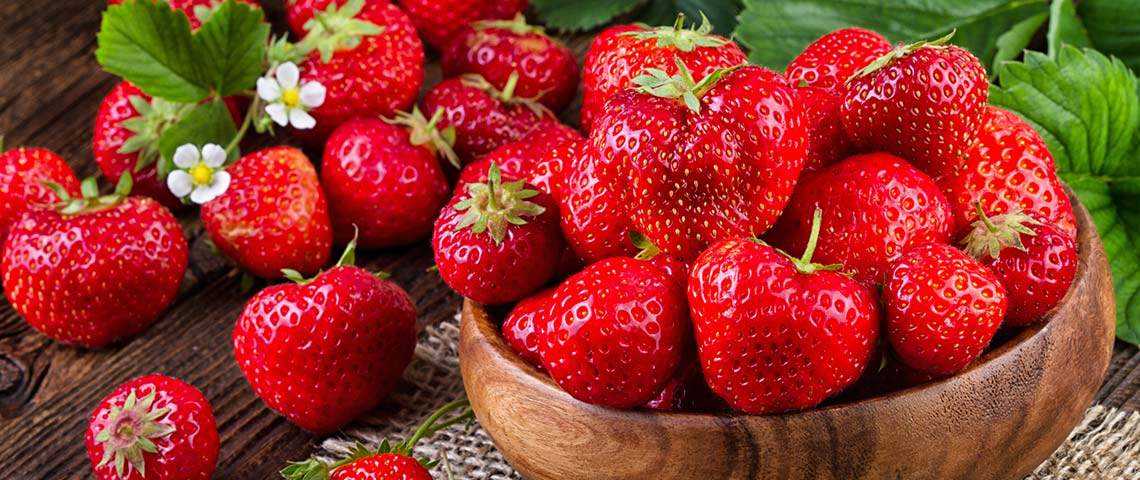
When it comes to fertilising strawberries before flowering, choosing the right fertiliser is crucial for the healthy growth and development of the plants. There are several factors to consider when selecting the appropriate fertiliser:
Nutrient Content
The first thing to look for in a fertiliser is the nutrient content. Strawberries require specific nutrients such as nitrogen (N), phosphorus (P), and potassium (K) for optimal growth. The ideal fertiliser should have a balanced ratio of these essential nutrients.
Additionally, it is important to choose a fertiliser that is specifically formulated for fruit-bearing plants. These types of fertilisers usually have higher levels of phosphorus, which promotes flower and fruit formation.
Time-release vs. Water-soluble
Fertilisers come in two main forms: time-release or slow-release and water-soluble. Time-release fertilisers release nutrients gradually over a longer period of time, providing a steady supply of nutrients to the plants. Water-soluble fertilisers, on the other hand, dissolve quickly in water and deliver nutrients to the plants immediately.
Both types of fertilisers have their advantages and disadvantages. Time-release fertilisers are convenient as they require less frequent application, but they may not provide nutrients as quickly as water-soluble fertilisers. Water-soluble fertilisers, on the other hand, allow for more precise and immediate nutrient delivery, but they need to be applied more frequently.
Organic vs. Synthetic
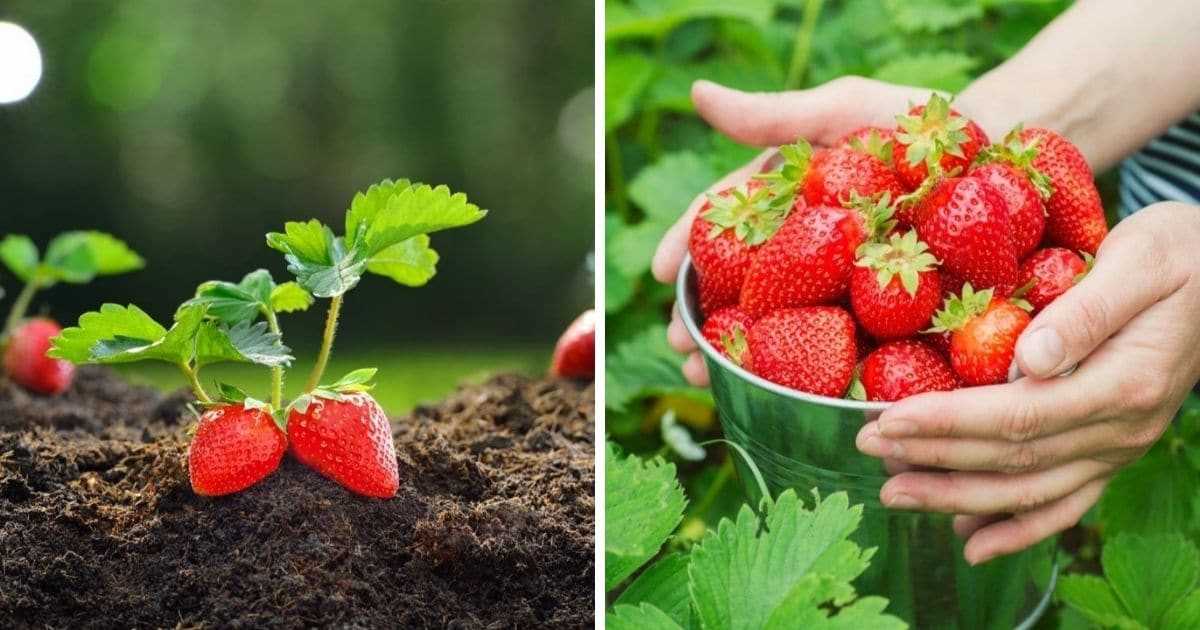
Another important consideration is whether to use organic or synthetic fertilisers. Organic fertilisers are derived from natural sources such as compost, manure, or bone meal. They are generally considered more environmentally friendly and may improve soil health in the long term.
Synthetic fertilisers, on the other hand, are chemically manufactured and provide a more concentrated source of nutrients. They are often cheaper and more readily available. However, excessive use of synthetic fertilisers can have negative impacts on soil and water quality.
Cost and availability are also factors to consider when choosing a fertiliser. Some specialised fertilisers may be more expensive or difficult to find, while others may be more affordable and readily available.
It is important to consider the specific needs of your strawberry plants and weigh the cost and availability of different fertilisers to make an informed decision.
| Factor | Considerations |
|---|---|
| Nutrient Content | Look for balanced ratio of essential nutrients, higher phosphorus for fruit formation |
| Time-release vs. Water-soluble | Choose between gradual nutrient release or immediate nutrient delivery |
| Organic vs. Synthetic | Weigh the environmental impact and long-term soil health |
| Cost and Availability | Consider the specific needs of your plants and the cost and availability of different fertilisers |
Important Nutrients for Strawberries Before Flowering
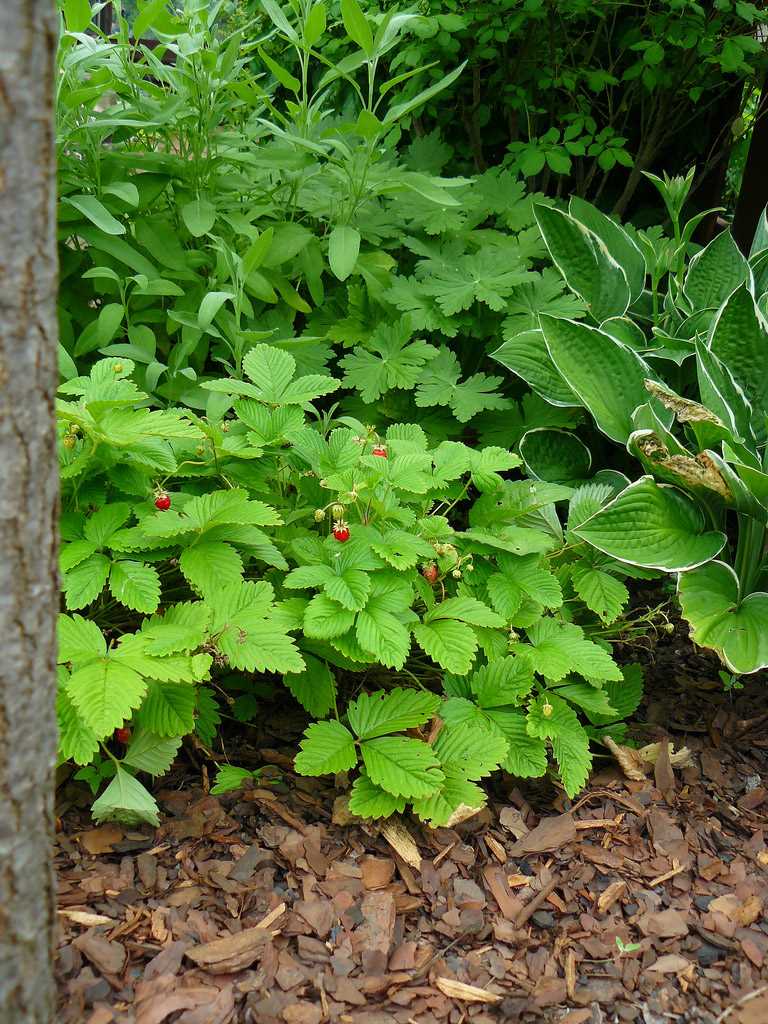
Before flowering, strawberries require specific nutrients to ensure proper growth and fruit production. These nutrients play a crucial role in promoting healthy roots and leaves, which are essential for overall plant development.
1. Nitrogen (N)
Nitrogen is an important nutrient for strawberries before flowering as it supports leaf and stem growth. It helps in the production of chlorophyll, which is essential for photosynthesis. Adequate nitrogen levels ensure that the plants have enough energy to develop strong roots and healthy leaves.
2. Phosphorus (P)
Phosphorus is crucial for strawberry plants before flowering as it promotes root development, flower formation, and fruit production. It aids in energy transfer within the plant and plays a significant role in the formation of DNA, RNA, and ATP. Phosphorus deficiency can lead to stunted growth and reduced fruit yield.
3. Potassium (K)
Potassium is essential for strawberries as it helps regulate water uptake and nutrient absorption. Before flowering, potassium promotes strong root development, enhances drought tolerance, and improves overall plant vigor. It also aids in the synthesis of sugars and proteins, which are important for fruit development and flavor.
4. Calcium (Ca)
Calcium is vital for strawberries before flowering as it strengthens cell walls and prevents diseases such as blossom-end rot. It is crucial for root health, nutrient uptake, and overall plant structure. Adequate calcium levels ensure strong plants capable of producing high-quality fruits.
5. Magnesium (Mg)
Magnesium is an essential nutrient for strawberry plants before flowering as it is a key component of chlorophyll. It plays a role in photosynthesis and energy production. Magnesium deficiency can result in yellowing leaves and reduced growth.
6. Trace Elements
In addition to the primary macronutrients mentioned above, strawberries also require trace elements such as iron, manganese, zinc, copper, and boron. These elements are needed in smaller quantities but are still important for plant growth and development. They play roles in enzyme activation, hormone synthesis, and overall plant health.
| Nutrient | Function |
|---|---|
| Nitrogen (N) | Supports leaf and stem growth |
| Phosphorus (P) | Promotes root development and flower formation |
| Potassium (K) | Regulates water uptake and nutrient absorption |
| Calcium (Ca) | Strengthens cell walls and prevents diseases |
| Magnesium (Mg) | Key component of chlorophyll and energy production |
Proper nutrition is essential for strawberries before flowering to ensure healthy growth, strong roots, and abundant fruit production. Providing the necessary nutrients through root and leaf applications can help optimize plant health and yield.
Question-answer:
What are the benefits of fertilising strawberries before flowering?
Fertilising strawberries before flowering provides essential nutrients to the plants, which helps in promoting healthy growth and development. It ensures that the plants have sufficient nutrients to produce quality flowers and fruits. Additionally, it helps in increasing the overall yield of strawberries.
Can I apply fertilisers directly to the roots of strawberry plants?
Yes, applying fertilisers directly to the roots of strawberry plants is an effective method of providing nutrients to the plants. This method allows the roots to directly absorb the nutrients, resulting in faster and more efficient nutrient absorption. It is important to follow the recommended dosage and application guidelines to avoid over-fertilisation.
What kind of fertilisers should I use for root application?
For root application, it is recommended to use a balanced fertiliser that contains essential nutrients such as nitrogen, phosphorus, and potassium. It is also beneficial to choose a fertiliser that is specifically formulated for strawberries, as it will have the optimal nutrient composition for their needs. It is important to read and follow the instructions on the fertiliser packaging for proper application.
Can I apply fertilisers directly to the leaves of strawberry plants?
Yes, applying fertilisers directly to the leaves of strawberry plants is another method of providing nutrients to the plants. This method is known as foliar application. Foliar fertilisation can be beneficial when nutrients need to be quickly absorbed by the plants, as the leaves have stomata that allow for efficient nutrient uptake. However, it is important to use a foliar fertiliser specifically formulated for strawberries and to follow the recommended dosage and application guidelines.
What are the advantages of foliar application of fertilisers?
Foliar application of fertilisers provides several advantages. Firstly, it allows for quick and efficient nutrient absorption by the leaves, bypassing any potential nutrient deficiencies in the soil. Secondly, it can help in correcting nutrient imbalances or deficiencies more rapidly. Lastly, foliar application can also improve the overall health and vitality of strawberry plants, leading to better overall growth and production.
When is the best time to fertilise strawberries before flowering?
The best time to fertilise strawberries before flowering is typically in early spring, before the plants start producing flowers. This allows the plants to have sufficient nutrients available for the flower and fruit development stages. It is important to follow the specific recommendations for the type of fertiliser being used, as some may have different application timings or requirements.







